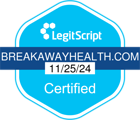The Hidden Dangers of Xanax Misuse
Xanax is often prescribed for anxiety and panic disorders, but its misuse can quietly lead to addiction. What starts as a temporary solution can spiral into a serious health problem. Recognizing the early signs of Xanax abuse can help prevent long-term damage.
Xanax abuse affects thousands of people across the U.S. ranging from teenagers to older adults. While it may seem harmless because it’s a prescription drug, abusing it can lead to physical and mental health setbacks, including life-threatening consequences. Knowing how to tell if someone is abusing Xanax could make a real difference. Whether you’re concerned about a loved one or looking at your own behavior, spotting Xanax abuse early can lead to life-saving interventions.
What is Xanax and Why Do People Abuse It?
Xanax is the brand name for alprazolam, a benzodiazepine prescribed to treat anxiety and panic disorders. Xanax works by calming the brain and nervous system and because of its fast-acting relief, some people misuse it to escape stress, tension, or even to sleep better.
Why do people abuse Xanax?
- To feel relaxed or “numb out” from stress
- To come down from other drugs
- Peer pressure, especially among teens and young adults
- To enhance the effects of alcohol or other substances
- To cope with insomnia or trouble sleeping
- To self-medicate for untreated mental health issues
- Curiosity or experimentation, particularly among young adults
- Easy access to leftover prescriptions or pills shared by friends
- To manage social anxiety in high-pressure environments
The problem is, regular misuse of Xanax leads the body to build a tolerance, which means the initial dosage no longer provides the desired calming effect. As tolerance grows, users often feel the need to increase their dosage to chase the same level of relief. This ongoing pattern of increasing dosage and frequency can cause the brain to rely on the drug to manage stress or anxiety, resulting in physical and psychological dependence. Over time, this dependence may evolve into a long term addiction, making it difficult to function without the drug and increasing the risk of dangerous behaviors and withdrawal symptoms.
Xanax Abuse Symptoms You Shouldn’t Ignore
Recognizing Xanax abuse symptoms can be difficult at first because it’s prescribed, but people often hide their use from doctors and peers. But as time and usage go on, the signs become much more noticeable.
Behavioral Signs:
- Taking more Xanax than prescribed
- Going to multiple doctors to get new prescriptions (“doctor shopping”)
- Isolating from friends and family
- Lying about drug use or becoming secretive
- Struggling at work, school, or home
Physical Signs:
- Slurred speech
- Trouble walking or poor coordination
- Drowsiness or falling asleep unexpectedly
- Memory loss
- Headaches and blurred vision
Emotional Signs:
- Mood swings
- Sudden anger or irritability
- Depression or increased anxiety when not using the drug
- Frequent emotional outbursts or crying spells
- Feeling overwhelmed by minor problems
- Flat affect or emotional numbness
- Sudden shifts between euphoria and deep sadness
- Anxiety or paranoia unrelated to current circumstances
If you’re wondering how to tell if someone is abusing Xanax, pay close attention to behavioral shifts, no matter how subtle. These might include growing secrecy, avoiding responsibilities, erratic mood changes, or an increased preoccupation with medications.
A person abusing Xanax may also begin withdrawing socially, showing signs of disconnection or appearing sedated during conversations. You might notice their speech becoming slurred or sluggish movements, especially at unusual times of the day. These behaviors, while sometimes attributed to stress or fatigue, can often signal a deeper issue tied to drug abuse. Identifying these warning signs early could be the key to intervening before the addiction grows to a long term problem.
How Common is Xanax Abuse?
Xanax is one of the most widely prescribed psychiatric medications in the U.S., primarily used to treat anxiety and panic disorders. Despite its legitimate medical use, it carries a high potential for abuse due to its fast-acting and calming effects. Unfortunately, this accessibility contributes to its widespread misuse. Data from national surveys reveal that millions of Americans report using benzodiazepines like Xanax outside of prescribed guidelines each year. Misuse includes taking larger doses, using it more frequently than prescribed, or taking it without a prescription altogether. This trend is particularly pronounced among young adults and college-age individuals, many of whom obtain the drug through friends or online sources. The combination of easy availability and powerful effects makes Xanax one of the most frequently abused prescription medications today.
Key Facts:
- Young adults between 18-25 are the most common group to misuse the drug.
- Xanax is often involved in emergency room visits related to drug overdose.
- Many people mix Xanax with alcohol or opioids, which dramatically increases the risk of overdose and death.
- Benzodiazepine abuse, including Xanax, has been steadily rising over the past decade.
- Xanax misuse is more common in urban areas with high prescription rates.
- Emergency responders often cite Xanax as a frequent substance in polysubstance overdose cases.
- Many people who misuse Xanax report using it alongside stimulants to balance out effects.
- Social media trends have contributed to the glamorization of Xanax use among teens.
Because of its high potential for dependence, even short-term misuse can escalate quickly.
Long-Term Effects of Xanax Abuse
The longer someone abuses Xanax, the more severe the consequences can become. This drug may start by calming anxiety, but over time it can disrupt almost every part of a person’s life.
Mental and Physical Effects:
- Memory loss and trouble concentrating
- Depression and suicidal thoughts
- Liver and kidney damage
- Risk of overdose, especially when mixed with other drugs or substances
Social Consequences:
- Damaged relationships with loved ones
- Legal trouble, especially related to prescription fraud or possession of drugs without a valid prescription
- Financial struggles from buying drugs illegally
These effects are scary but are also life-altering. Continued Xanax abuse can gradually rewire how the brain functions, weakening a person’s ability to manage emotions, stress, and decision-making even without using the drug. Physically, prolonged misuse may harm vital organs such as the liver and kidneys, leading to long term health problems.
Over time, users may lose their ability to feel pleasure, experience motivation, or form new memories. Without treatment, the damage caused can extend beyond health, often impacting family stability, career growth, and legal standing. The longer the abuse goes unaddressed, the harder it becomes to reverse the damage.
Getting Help for Xanax Addiction
Recognizing the signs is important, but taking action is what saves lives. If you or someone you know shows signs of Xanax addiction, it’s important to seek help right away.
Treatment Options May Include:
- Medically supervised detox to manage withdrawal symptoms
- Behavioral therapy to address emotional triggers
- Support groups and peer counseling
- Holistic treatments like exercise and nutrition support
Breakaway Health in Costa Mesa offers support that focuses on each person’s individual needs, without overcomplicating the process. Whether you’re dealing with early signs or advanced symptoms, help is available now.
Share Hope And Help Someone Today
Xanax abuse isn’t always easy to spot, but once you know how to spot the signs, you can make a real difference.
If you’re concerned about drug symptoms or looking for support with Xanax addiction, reach out to Breakaway Health in Costa Mesa, CA today. We’re here to listen and provide care you can count on.
Frequently Asked Questions (FAQs)
1. What are symptoms of Xanax abuse?
Symptoms include drowsiness, confusion, memory issues, slurred speech, mood swings, and taking higher doses than prescribed.
2. Why do people abuse Xanax?
Many use Xanax to escape anxiety, boost the effects of other drugs, or because of peer influence.
3. How to tell if someone is abusing Xanax?
Look for changes in mood, behavior, coordination, and secrecy around medication use.
4. How common is Xanax abuse?
Xanax abuse is very common, especially among young adults. It often leads to ER visits and overdose when combined with other drugs.
5. What should I do if I suspect someone is addicted to Xanax?
Talk to them with compassion and contact a professional treatment center like Breakaway Health for guidance.







